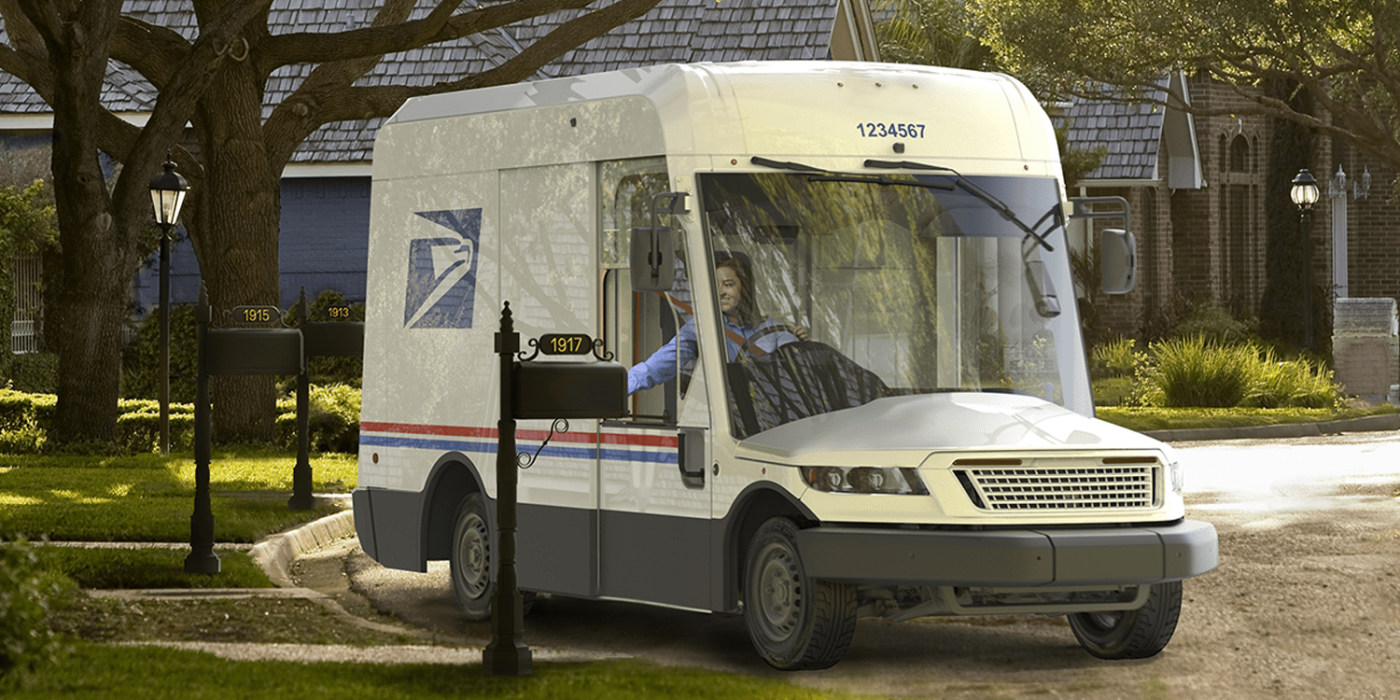US Postal Service (USPS) wants $3.3Bn to electrify the fleet
The estimate comes from an environmental impact statement USPS released last week. The issue is the renewal of the agencies delivery truck fleet. This fight has narrowed down to US postmaster Louis DeJoy, a last-minute appointee from Donald Trump, and the Biden administration.
DeJoy had initially awarded a contract to the US commercial vehicle manufacturer Oshkosh Defense, which is mainly known for building military vehicles powered by fossil fuels, naturally. Since the news broke in February, several updates reportedly have seen the row escalate, not the least because US President Biden has since issued an Executive Order that requires all agencies to transform their fleets to zero-emission vehicles. In fact, the order demands that all light-duty vehicles acquired by the government be emission-free by 2027 before, by 2035, this will affect all new vehicles so that agencies will have to buy battery-electric or fuel-cell powered vehicles exclusively.
The case of USPS, however, appears not that simple. The agency is the only US agency that does not receive government appropriations since the 1970 Postal Reorganization Act reorganised the USPS into a businesslike organisation, making pressure harder to apply.
It also explains why their latest environmental impact statement is calling for funding if they were to replace all or at least some vehicles with electric vehicles. Earlier estimates under DeJoy saw USPS claiming they would not commit to more than ten per cent of the fleet.
Democrats and EV manufacturers like Workhorse have since opposed the numbers and processes behind the initial tender and contract decision, and the latest statement may be seen as a concession by USPS (or blackmail, pun intended) given that the agency now considers electrifying more strongly (or considers that it will have to).
“The Proposed Action is the most achievable given the Postal Service’s financial condition,” USPS said in the statement. The agency therein estimated that it could electrify 75,000 of its 212,000-strong fleet for $2.3 billion. It added that it could electrify the entire with the additional expense of more than $1 billion, bringing the asking “price” up to $3.3Bn.
Said funding may not be entirely out of the question. The ‘Build Back Better Act’, which is currently facing discussion in Congress, may actually provide some of these funds. The version of the bill passed in the House in November 2022 included $2.5 billion for USPS to buy electric vehicles and another $3.4 billion for charging infrastructure at postal buildings. However, as EE News remarks, the bill’s scope is shrinking as it is negotiated in the Senate.
The portal also quotes Patricio Portillo, a transportation analyst at the Natural Resources Defense Council. He said it is hard to evaluate USPS’s funding request because the new analysis offered little supporting data.
“We’re just going to wave our hand and say it’s really expensive,” he told EE News. “It doesn’t seem they’ve done their homework.”
Having done some basic math ourselves, $3.3Bn to replace a fleet of 165,000 vehicles comes down to $20,000 per vehicle which does not seem entirely off.
EE News also quotes Atlas Public Policy, estimating that 97 per cent of USPS vehicles could be electrified at a lower total cost of ownership than comparable gas or diesel trucks by 2025. Plus, international examples have shown as much, not to speak of substantial electrification advances at private logistics companies such as FedEx, UPS or Amazon.
At the same time, there are attempts underway to oust the US postmaster general for good, as the Guardian outlines in an update. In November, the Biden administration nominated two members to join the Postal Service’s board of governors, which has the authority to remove DeJoy from his position. Biden previously appointed three members to the board, while Trump appointed the remaining four.
What also remains to be seen is which power the Executive Order will have in the end. In September last year, Workhorse withdrew its complaint filed in June with the United States Supreme Court against the United States Postal Service’s fleet replacement contract award. The reasoning: “The federal government has announced its intention to replace its fleet with electric vehicles, and we believe that the best way for us to work with any governmental agency is through cooperation, not through litigation.”
While the deal with Oshkosh remains in place, for now, the company has not scheduled building the vehicles for USPS before 2023.
uspsngdveis.com (USPS impact statement, pdf), eenews.netteslarati.com, theguardian.com (background USPS)





0 Comments